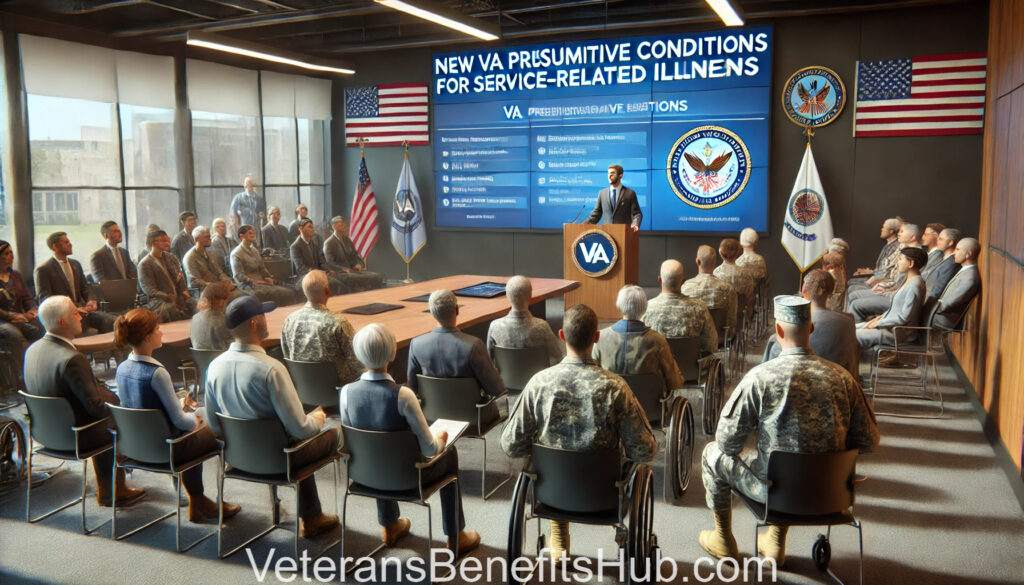VA Processing for NEW Presumptive Conditions For Veterans

In a significant move to support veterans, the Department of Veterans Affairs (VA) has announced new presumptive conditions that will make it easier for eligible veterans to receive benefits. These changes were officially approved as of March 25, 2025, and have an effective date of January 10, 2025. This expansion particularly impacts Gulf War-era veterans who served in specific locations.
What Are Presumptive Conditions?
Presumptive conditions eliminate the need for veterans to prove a direct service connection between their military service and specific diseases. Instead, the VA automatically assumes the connection if the veteran meets the service criteria.
Newly Added Presumptive Conditions
The newly included presumptive conditions for service connection under 38 CFR 3.320a include:
-
Urinary Bladder Cancer
-
Ureter Cancer
-
Reproductive Cancers (G cancers)
-
Acute and Chronic Leukemias
-
Multiple Myeloma
These conditions will be automatically service-connected for eligible veterans, removing the burden of proof previously required.
Who Qualifies?
A covered veteran is any veteran who served in:
-
Southwest Asia Theater of Operations on or after August 2, 1990, including Iraq, Kuwait, Saudi Arabia, Bahrain, Qatar, UAE, Oman, the Persian Gulf, and adjacent waters.
-
Afghanistan, Djibouti, Egypt, Jordan, Lebanon, Syria, Yemen, or Uzbekistan on or after September 11, 2001.
-
Naval or airspace above these locations.
Exceptions to Presumptive Service Connection
A condition will not be presumed service-connected if:
-
There is affirmative evidence proving that the disease was not incurred or aggravated during service.
-
The disease resulted from a supervening condition or event occurring after service.
-
The disease is caused by the veteran’s own willful misconduct.
When Do These Changes Take Effect?
The final rule is effective January 10, 2025. While some reports have suggested an earlier date, January 10th is the confirmed effective date for these new presumptive conditions.
How to Apply for VA Benefits
Veterans diagnosed with these conditions should apply for benefits as soon as possible. The VA encourages affected veterans to submit claims online or through accredited representatives.
-
Apply Online: VA Disability Compensation Application
-
Find a VA Representative: Accredited Claims Representatives
-
Download Forms: VA Form 21-526EZ (Application for Disability Compensation)
Final Thoughts
This expansion is part of a broader VA effort to ensure veterans receive the care and benefits they deserve. By adding these new presumptive conditions, the VA is reducing barriers for veterans suffering from service-related illnesses.
If you believe you qualify, do not delay in filing your claim. The sooner you apply, the sooner you can access the benefits you’ve earned. For further details, refer to the official VA press release here.
For updates on VA benefits and services, be sure to visit VeteransBenefitsHub.com regularly.
Disclaimer
This article is for informational purposes only and does not constitute legal or medical advice. While we strive to provide accurate and up-to-date information, veterans should always consult the Department of Veterans Affairs (VA) or an accredited Veterans Service Officer (VSO) for official guidance regarding their specific claims and eligibility.
